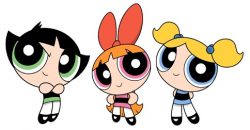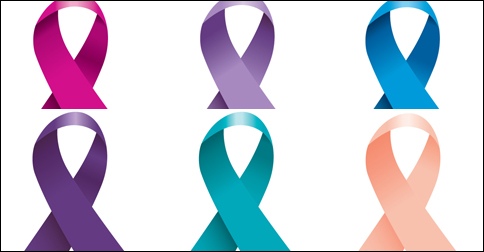CONTENTS
Because:
- Too often there’s no link between my purchases and how much is given to the charity, or the correlation is vague
- Whoops, my money doesn’t go where I would really prefer it to, if I gave it some thought
- If I was going to buy that box of cereal anyway, isn’t my “support” of the charity literally the very least I can do?
- Complicated decisions aren’t my forte when all I want is a cake mix
My “Support” Has No Financial Impact
So what about that bottle of sports drink with the ribbons or other charity support packaging? It’s clearly designed to get me to notice their product over a competitor’s, plus give me a good feeling when I buy it.
But does my money actually make a difference to how much the charity receives? Charity Navigator’s fantastic “Should You Buy” blog sums up many of the relevant questions. Bottom line, it’s quite possible there may be no tie between my purchase of the product and the amount the company is going to give to any charity.
Unless it specifically says so on the package, my purchase probably doesn’t affect their donation commitment. Even when it does say “a portion of your purchase” supports the charity, the fine print at their web site could add, “Limited to the amount we were going to give anyway.”
That alone is enough to make me want to ignore all the ribbons and emblems. My dollars could be the “extra” that stays in the company’s coffers as profits. Or they could be redirected to a different charity I might not have wanted to support. I am weary enough of having to squint at labels for nutrition information, but to scan small print looking for an explanation of what that pink banner means? I’m truly over it.
I’m even more jaded about product-charity branding ties when the charity supported is within their corporate control, such as “Brand X’s Cancer Foundation.” Why should a large corporation be the funnel toward a cause I support when I can cut out the middleman and donate directly? And then it’s tax deductible? And choose the actual charity myself instead of their charitable-corporate-partner?
“Support” Might Not Mean What I Think It Does
As an example especially prominent this time of year, breast cancer fundraising is ferocious and competitive with powerhouse charities prominently tied to large corporations and sports leagues. It would be easy to scoop up some pink beribboned cookies and call it a day. But I want my dollars guaranteed to support research into a cure as well as treatment for poor women. The choice of the charity makes a huge difference to how my “pink money” gets spent though. I can’t tell just looking at a ribbon on a box what my support will buy should my dollars actually trickle through.
Check out this list from Charity Navigator which rates breast cancer charities. Their criteria is explained there. I was surprised by the groups earning only 2 stars out of 4. I also found out who puts more money into program instead of administration or fundraising. It made me consider a couple of research charities I hadn’t heard of over other better marketed ones. Yes, it took some time to study, but now I am doubly convinced I don’t want to blindly throw my money at a symbol.

Isn’t Buying Pink Literally the Very Least I Can Do?
So if it doesn’t have much of an impact and might not even go to what I want to support, why did I choose “support childhood literacy” cereal? I mean, I believe in childhood literacy like gravy believes in mashed potatoes. So yeah, that cereal ended up in my cart. Job done, right?
I have found it too easy to think buying a ticket to a ballgame, a blue ribboned yoga mat, or even just watching athletes in pink socks on TV is an actual contribution to a cause on my part. This is an even more flawed conclusion if I was going to do all those things anyway.
Here’s my reality check: If I don’t get a receipt stating what portion of my purchase was a charitable donation, I didn’t make one. Buying a box of cereal might give me warm fuzzies and there’s a chance my purchase will actually trickle its way to a real charity, but I shouldn’t be going out of the way to pat myself on the back while I chow down my breakfast.
A Complex Decision at the Wrong Time
Then there’s the issue that money is a powerful tool. Why would I throw it around without care? I really have no idea if I helped anything but my waistline with that box of cereal. It was a moment of weakness, a lack of clarity. Plus it was the kind I bought anyway. (See above re: literally the very least I could do…)
Kids with cancer. Animal habitats. Disaster relief. Clean water. On top of the direct appeals for aid I get as mail, the barrage of products or companies throwing causes at me while I’m shopping seems endless. When they’re specific about the charity group they’re supporting (if they’re not = red flag!) that just raises more questions for me. I don’t know the difference between the National Cancer Center or the Prevent Cancer Alliance. Do they spend 90% of their budget on program or fundraising? Are they homophobic? Are they trying to defund or restrict other charities I support? Do they have a track record of delivering on their promises of aid?
Why am I trying to answer these questions when I’m buying cereal or coffee? The best frosting for my devil’s food cake and helping with disaster relief are two separate, serious decisions.
Co-mingling ordinary products I buy and charitable decisions has built up into a crazy-making frenzy. So I’ve resolved to simplify:
- If I feel I’ve earned and can afford a ticket to a ballgame, I go. I need groceries, I buy them for all the usual reasons.
- If I want to support food for the needy, or disaster relief, or suicide prevention, I give to a group I pick myself. I won’t make those decisions standing in the cake mix aisle.
- If I want to display to the world that I support a cause or issue, I know there will be no shortage of options.
Charity Navigator Helps
I urge everybody to check out Charity Navigator‘s evaluation tools. It does take some time and study, and registering at the site is necessary to get the most out of it. But I feel I get information more quickly and in a consistent format than random searches will yield. Their blog on Intelligent Giving is really informative and uses breast cancer charities as an example of how you can choose where your money goes based on what YOU want to see in the world.
Holiday charity drives are just around the corner, so you might not want to wait.
Do you have a charity evaluation tool or method you’d like to share? I’m always open to new ways to approach the analysis.
2022-12-04 Addendum. I am now a breast cancer survivor. More than ever I believe that supporting direct research and access to mammograms for ALL is what saves lives.

